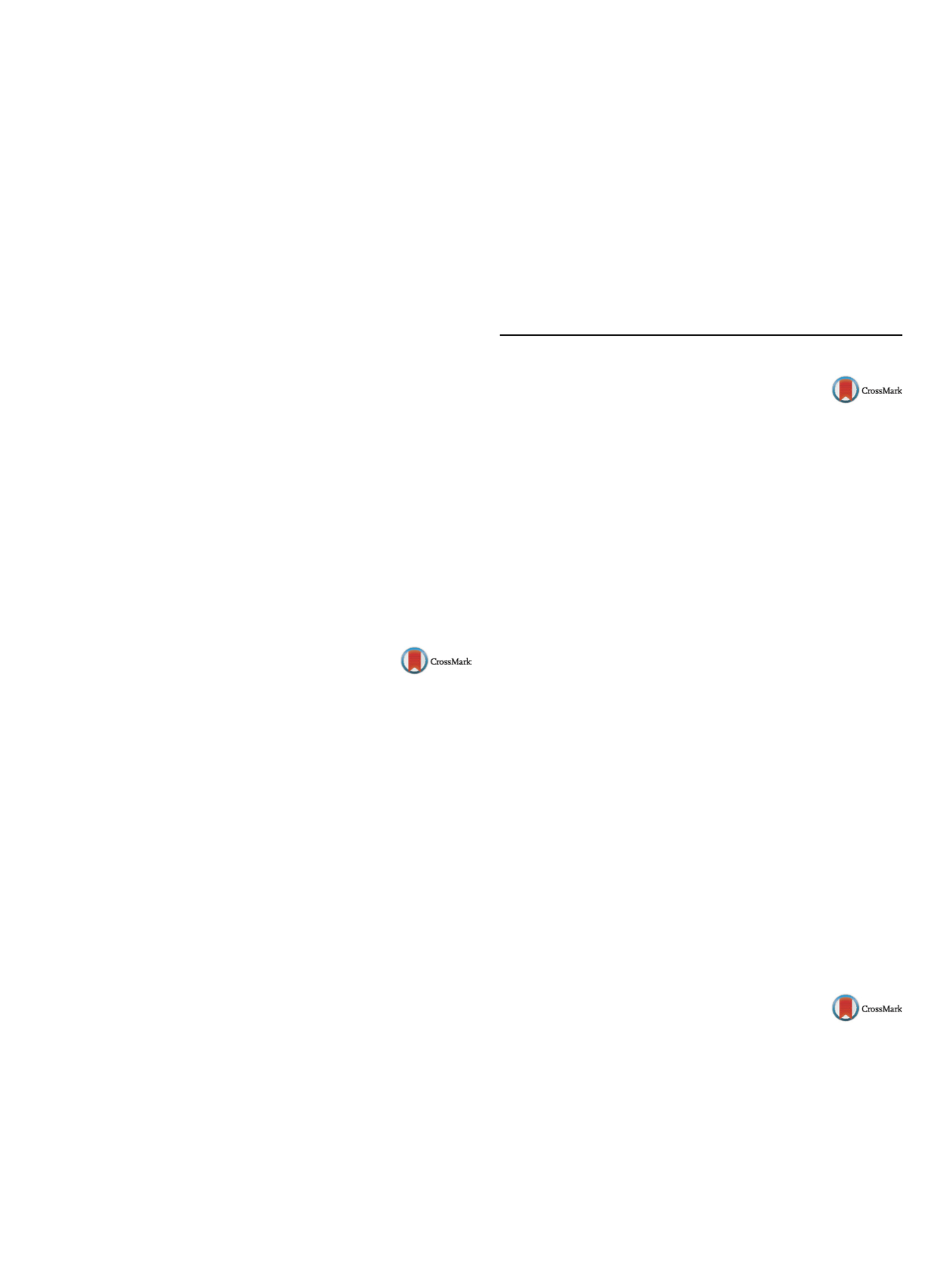

25th European Congress of Psychiatry / European Psychiatry 41S (2017) S238–S302
S273
Setting/locations
Rural primary care and psychiatry clinic in
Northern New England, USA.
Subjects
People over age 18 diagnosed with a psychotic disorder
on medications.
Intervention
Fifty consecutive clients during one month’s time
were invited to participate; 19 completed a one-month open-
label phase of the addition of a micronutrient to their medication
regimen; all 19 then withdrew rather than risk randomiza-
tion to a placebo. We then compared the response of those 19
over 24 months of micronutrients +medication to the 31 people
who declined participation enriched by an additional 28 con-
secutive patients recruited over the second month of the study
for a total of 59 who received medication without micronutri-
ents.
Outcome measures
All clients were evaluated with the Positive
and Negative Symptom Scale and the Clinical Global Impression
scale at study baseline and after 3, 6, 9, 12, 15, 18, and 24 months.
Psychosis was confirmed with clinical interview using DSM IV-TR
criteria. All participants had normal physical examinations and lab-
oratory studies.
Results
Outcomes were similar for both groups until 15 months,
though the micronutrient group used significantly less antipsy-
chotic medication throughout that time (
P
< 0.001). At 15 months,
the micronutrients +medication group exhibited significantly
fewer symptoms than the medication only group, a difference that
was even stronger at 24 months.
Conclusions
Micronutrients may be a beneficial long-term,
adjunctive strategy for people with psychotic disorders, allowing
for smaller doses of antipsychotic medications.
Disclosure of interest
The authors have not supplied their decla-
ration of competing interest.
http://dx.doi.org/10.1016/j.eurpsy.2017.02.103EW0490
Strategies for managing psychosis
with small amounts or no medication:
A proof of concept paper
L. Mehl-Madrona
1 ,∗
, B . Mainguy
21
Eastern Maine Medical Center, Family Medicine Residency, Bangor,
USA
2
Coyote Institute, Education, Orono, USA
∗
Corresponding author.
Introduction
Some patients with the diagnosis of a psychotic dis-
order wish to minimize or avoid medications.
Methods
We report qualitative and quantitative data on a group
of patients as a proof of concept study–that management withmin-
imal or no medication is possible.
Patients
A series of 60 adult patients presented with psychosis
and engaged with us in dialogical psychotherapy, medication, and
lifestyle management over at least six months in an effort to mini-
mize or eliminatemedication. An additional 209 patients presented
for treatment but did not continue for six months. An anony-
mous, matched comparison group of 60 patients of the same age,
socio-economic status, diagnosis, and severity of illness was gen-
erated from the electronic health records at another large clinic
where one of us also worked (LMM). We quantifed symptom level
using the Brief Psychiatric Rating Scale, the Positive and Negative
Syndrome Scale, two depression rating scales, the Clinical Global
Inventory, and the Revised Behavior and Symptom Identification
Scale. Narrative interviews of all 269 patients generated qualitative
data.
Results
Thirty-nine patients managed well without medica-
tion; 16 managed well on low-dose medication. Four individuals
required progressively higher levels of medication and one decom-
pensated. The overall cost-benefit was favorable in creating fewer
hospitalization, crises, and diminished suicidality.
Conclusions
The results suggest the need for individualized
approaches that are client-centered and build upon the previous
successes of the person, enroll family and friends in a commu-
nity effort, and collaborate with those communities to apply those
approaches desired by the people themselves.
Disclosure of interest
The authors have not supplied their decla-
ration of competing interest.
http://dx.doi.org/10.1016/j.eurpsy.2017.02.104e-Poster Walk: Schizophrenia and Other Psychotic
Disorders–Part 4
EW0491
Relationships between smoking,
psychopathology and medication
outside effects in schizophrenia
L. Ghanmi
1 ,∗
, K. Zitoun
1, L. Zouari
2, M. Maalej
21
Regional hospital of Gabes, Psychiatry, Gabes, Tunisia
2
University Hospital Hedi Chaker, Psychiatry “C”, Sfax, Tunisia
∗
Corresponding author.
Aim
To determine the relationship between smoking status and
clinical characteristics of schizophrenic patients.
Methods
It was a cross-sectional study. One hundred and
seventy-five schizophrenic outpatients were assessed by the Posi-
tive And Negative Syndrome Scale (PANSS), the Global Assessment
of Functioning Scale (GAF), the scale of measurement of abnormal
involuntary movements (AIMS) and by the rating scale akathisia
caused by a drug Thomas Barnes. Current smokers (
n
= 85) were
compared to non-smokers (
n
= 90) on clinical variables.
Results
The mean number of cigarettes was 15 cig/day. In our
sample, current smokers account for half of the patients and were
exclusively men. Smokers were significantly more single patients
(76.5 vs. 58.9,
P
= 0.01). There were no significant differences
between smokers and non-smokers regarding clinical variables,
including age of onset of the disease, the duration of the disease, the
severity of positive and negative symptoms, and GAF scores. Smok-
ing was significantly associated with more frequent prescription of
conventional neuroleptics (98.8 vs. 92%,
P
= 0.03) and poorer adher-
ence to treatment (77 vs. 62.2%,
P
= 0.02). There were no significant
differences between the 2 groups regarding the average doses of
neuroleptics, the presence of extrapyramidal signs, scores on the
AIMS score and akathisia.
Conclusion
Smoking is common in patients suffering from
schizophrenia. Smoking status should be considered in the assess-
ment of neuroleptic treatment in schizophrenia.
Disclosure of interest
The authors have not supplied their decla-
ration of competing interest.
http://dx.doi.org/10.1016/j.eurpsy.2017.02.105EW0492
Evaluation of sleeping profile in
schizophrenia patients treated with
paliperidone-extended release: Result
from an open labeled perspective
study in south East Asia (perfect study)
R. Kongsakon
Faculty of Medicine Ramathibodi hospital, Dep. of psychiatry,
Bangkok, Thailand
Objective
To evaluate the impact of treatment with paliperidone
extended release for 6 months on sleeping profile in schizophrenia
patients.


















